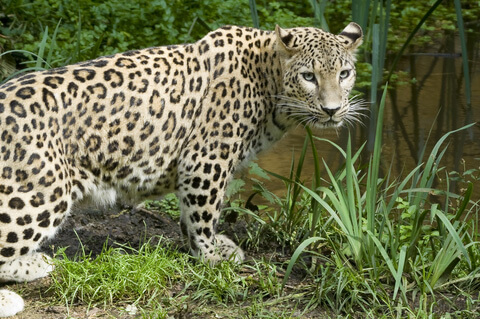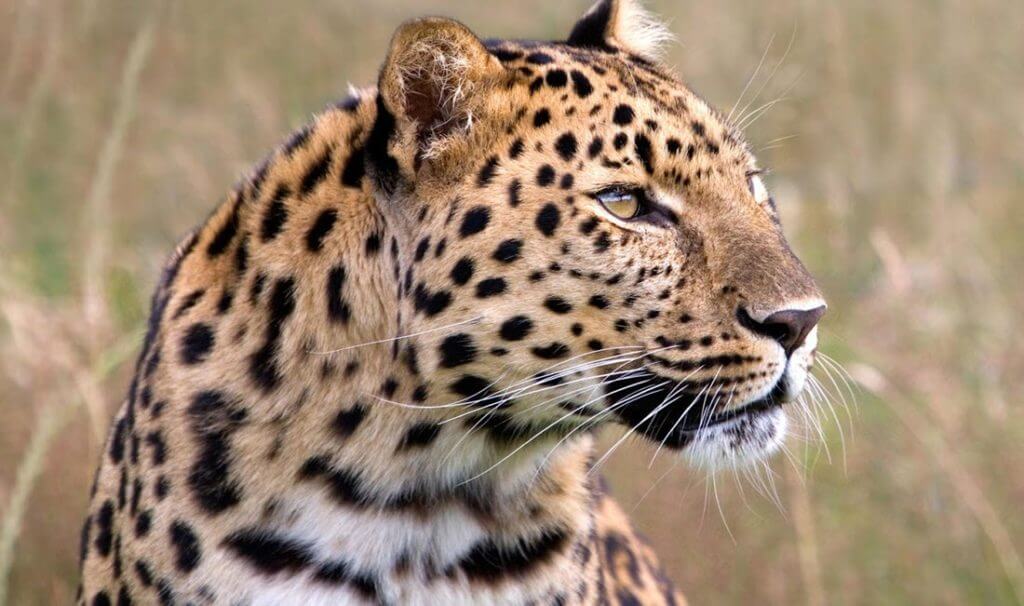A beautiful, light-colored leopard that is almost extinct.
The Amur leopard. also known as the Far Eastern leopard, is a Critically Endangered big ca that inhabits parts of southeastern Russia (Primorsky Krai) and northeastern China (Jilin and Heilongjiang). A few leopards have also been reported in northern Korea. It is a subspecies of the leopard.
 The Amur leopard lives farther north than any other leopard. It is the only leopard subspecies that has adapted to a cold climate. Its fur is thick, soft and covered in spots. Overall the coat has a pale color, which helps the cat hide in the snow.
The Amur leopard lives farther north than any other leopard. It is the only leopard subspecies that has adapted to a cold climate. Its fur is thick, soft and covered in spots. Overall the coat has a pale color, which helps the cat hide in the snow.
Currently, there are less than 60 Amur leopards still living in the wild. The Amur leopard is one of the most endangered wild cats on the planet.
Scientific Name: Panthera pardus orientalis
Conservation Status: Critically Endangered
Interesting Amur leopard facts
- Has very thick fur and is the only leopard species that can live in a cold climate.
- Less than 60 Amur leopards still live in the wild.
- Lives farther north than any other leopard.
More about the Amur leopard
Physical appearance
 Amur leopards are relatively small in size. Males range from 42 to 54 inches, with a tail length of 32 to 35 inches. They weigh between 70 and 100 lbs.
Amur leopards are relatively small in size. Males range from 42 to 54 inches, with a tail length of 32 to 35 inches. They weigh between 70 and 100 lbs.
Females are smaller, weighing between 50 and 95 lbs. The cats coat ranges in color from various shades of yellow to gold and is covered in spots.
The leopard’s fur is usually much lighter during the winter months. The thickness of its fur and its light cream-color is one of the main physical attributes that sets it apart from other leopards
Habitat (where Amur leopards live)
The leopards maintain individual territories approximately 20 to 120 miles in size, usually in a river basin. The current Russian population exists in an area of about 2,700 square miles. Leopards cross the Tumen River (a long river that makes up part of the boundary between Russian, China and Korea) to travel between those countries.
Hunting and prey (diet)
Amur Leopard prey consists of musk deer, roe deer, moose, wild pig, Manchurian wapiti (elk), hare, badger, fowl, mice and at times, young black bears. The leopard usually hunts at night.
Reproduction and lifespan
Female leopards start breeding between 2-3 years of age. They have between one to four cubs during the spring or early summer. Most recently, the average size of a litter has only been two cats. The young cats leave their mothers within 1 to 1 ½ years. Wild Amur leopards generally live between 10 to 15 years. Captive leopards can live as long as 20 years.
Amur leopard conservation issues
The serious decline of the Amur leopard population is the result of poaching, deforestation and loss of habitat from fires.


Comments
Amur Leopard — No Comments
HTML tags allowed in your comment: <a href="" title=""> <abbr title=""> <acronym title=""> <b> <blockquote cite=""> <cite> <code> <del datetime=""> <em> <i> <q cite=""> <s> <strike> <strong>